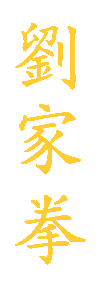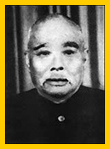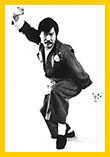


Lau Gar Keun (Lau Family Fist) is one of the 5 original ancestor styles of kung fu, and therefore among one of the oldest. It's derived from a form of boxing practiced at Kuei Ling Temple situated in Kong Sai (Guangxi) Province in west China. It was learned from a monk on retreat from that temple by Master Lau Sam Ngan, "Three Eyed Lau", a tiger hunter, whom is honour as founder of the style. He is reputed to have earned his name because of a deep scar in the middle of his forehead which resembled a third eye. The style subsequently became popular over a large part of south west China. In fact all of the southern systems of kung fu are derived from 5 major styles namely: Lau, Hung, Choy, Li and Mok.
Towards the end of the 1800's Master Yau's Grandfather (Yau Luk Sau) conceived the desire to learn Kung Fu. At the age of 13 he left Kowloon, now in the Hong Kong Special Administrative Region, and travelled to Kong Sai Province where he trained under the Master Tang Hoi Ching. Nine years passed before he was given the right to teach independent of Master Tang. Master Yau's Grandfather subsequently met the Master Wan Goon Wing with whom he continued his studies for a further six years, and whom he served as son until the latter's death. On his return to Kowloon, Master Yau Luk Sau taught only his family and close friends before opening his club to the public.


During this time Master Yau commenced his training at the age of six. The training was conducted at the village community centre in Kowloon City (Gau Lung Sing) just outside the famous Walled City. His training continued for 4 hours a night 360 nights a year for 15 years.
Master Yau brought the style to the United Kingdom in 1961. The British Kung Fu Association was set up in 1973 and Master Jeremy Yau, being the keeper of the Lau Gar style, was invited to be the Chief Instructor. Subsequently Lau Gar has become the most popular form of Kung Fu throughout Britain and Ireland.
The forms, or sets, of Lau Gar are based on the five original animal styles of Shaolin Kung Fu, often referred to as the 'Five Ancestors'. These are the Dragon, Tiger, Leopard, Snake and Crane.

The Dragon ('Lung') style represents the cultivation of the spirit. Pronounced back arches, side horse stances and twisting body postures feature strongly in the style. Flexibility and graceful movements are stressed.

The Tiger ('Fu') does not need to defend, it is the ultimate predator. It has no evasion techniques, no blocking or defence. In any confrontation it leaps into attack going for the quick and direct resolution of the conflict. The Tiger uses any simple and direct approach. Its techniques and methods are easily understood with not a lot of strategic thinking or planning; and absolutely no preparation. The Tiger is purely reactive. The tiger style emphasises the training of the bones and has movements characterised by use of the shoulders and the waist held strongly.

The Leopard ('Paau') style represents bravery and martial ferocity. It requires the development of strength and features a strong waist and lower extremities. The leopard style also requires the development of power and speed and swift penetrating strikes.

The Snake ('Se') style emphasises the development of 'chi' and employs highly accurate strikes to vital areas. Classic snake style is characterised by the use of flexibility, elasticity and diagonal movements. Snake style attacks employ shooting hand attacks striking to the opponent's venerable regions. To practice Snake the practitioner must spend a lot of time working on accuracy and precision. He/she must be 100% in timing, distancing, effort, target and opportunity. They may use some distracting, swaying motions, occasional feints (each executed as if it were a real attack, which it could be) but that is as complex as it gets.

The Crane ('Hok') style is characterised by training of the sinews. It requires quick movements and a well developed sense of balance and practitioners will make use of deflecting, jabbing, hooking and poking movements frequently to an opponent's vital areas. Long arm attacks and use of the waist to generate power are combined to form a graceful style that overcomes aggressive attacks by skilled, almost passive, deflections. The Crane does not attack only counter attacks. It would do this from any angle except the front. It would always side step the attack, possibly using its wings to mask the movement, change direction again, possibly to deliver a technique to the attacker. It is a master of evading supported by blocking and redirection. It would seek to frustrate its opponent, helping it to defeat itself.